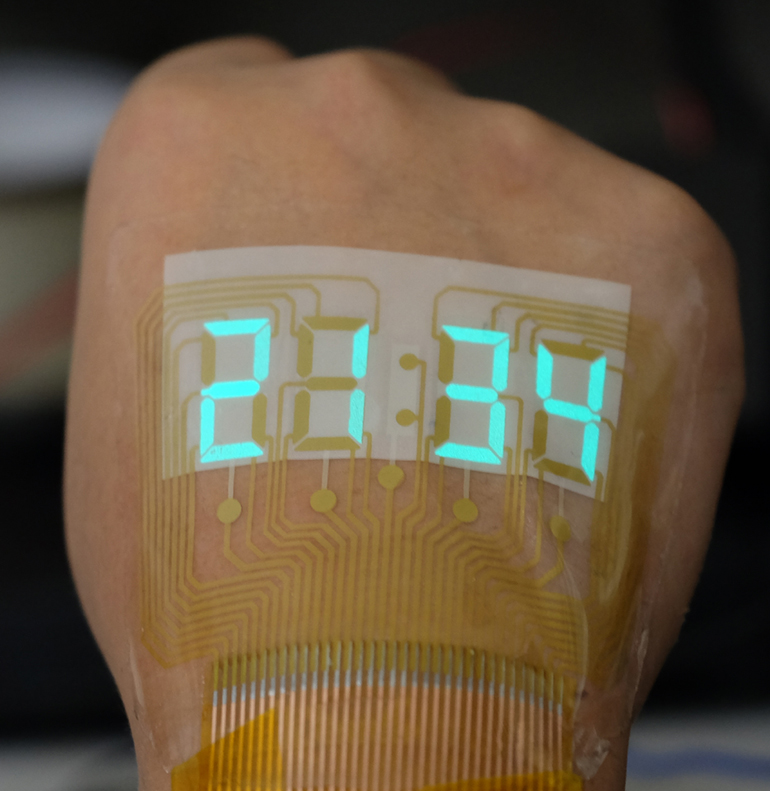Researchers from Nanjing University in China have developed a way to place displays on human skin that are flexible, safe, and don’t require a lot of power to run. The technology will certainly have implications for the field of wearable devices by allowing already existing flexible medical devices to display relevant biomedical information.

Previously, flexible alternating-current electroluminescent displays that can be applied to the skin required relatively high voltages, potentially hurting users if damaged. They also drain a lot of power.
The new device is made of silver nanowire electrodes encasing a layer of a stretchable dielectric material with light-emitting microparticles seeded throughout. The dielectric is made of a stretchy polymer with ceramic nanoparticles. These nanoparticles work with the light-emitting ones to boost their brightness, allowing for the screen to be seen with indoor lighting turned on.
A volunteer had a screen stuck to his skin that displayed the time. It looks like the technology can be easily shrunk down for much higher resolution displays that can provide live data from on-body medical devices, healthcare trackers, and that can even be used in hospitals to display readings directly on patients.
